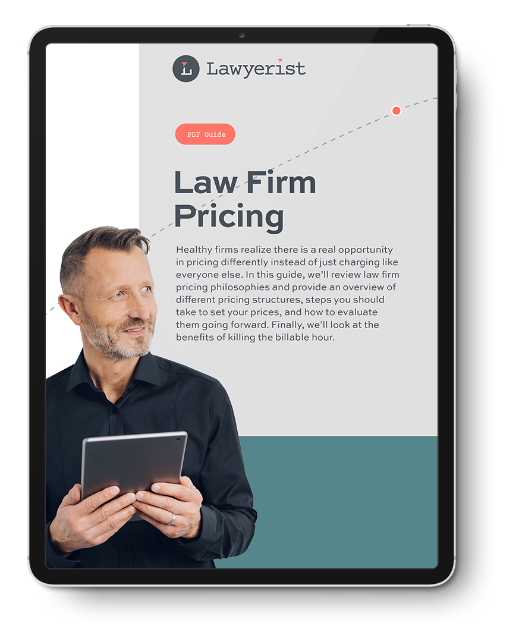Contingency Fee Pricing
Contingency pricing is typically used in litigation, insurance, personal injury, employment, or medical malpractice cases. This is where you take a certain percentage of the monetary settlement or damages award your client receives.
The fee is generally a percentage of the award, usually 30%-40%. Often, the percentage the firm receives increases if the case proceeds through certain stages of litigation.
Benefits & Drawbacks of Contingency Fees
This is a good option for clients who cannot pay upfront, but could lead to you and your clients having different goals. Your client may want to take a matter to trial, but you may feel like you would prefer to settle and ensure your payment. Working on a contingency can be costly for the firm if it covers the costs of expenses and expert fees but is unable to recover an award.
Ethical Considerations
A note on contingency fees: ABA Model Rule 1.5(d) prohibits the use of contingency fees for divorce cases where the fee is contingent on securing the divorce or getting an amount of alimony, support, or property and criminal cases. You’ll want to check with your state’s ethics rules to make sure certain cases can be charged on contingency and whether additional requirements (such as a written fee agreement) are required.
